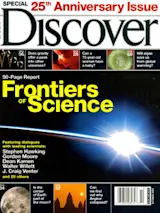In the fast-shrinking realm of electronics, micro is already retro. Today’s smallest transistors—the fundamental components of information processing—are about one-thousandth the width of a human hair and operate at several billion cycles per second, or gigahertz. That’s fine for listening to CDs or playing The Sims. But it’s way too bulky and nowhere near fast enough for the next generation of devices.
The most dependable way to increase the speed at which electric charges work is to decrease the distance they have to travel. And there’s the technological rub. By the end of this decade, many experts predict, the current method of making microcircuits—done by shining high-frequency light through stencil templates to etch connections onto a semiconductor chip—will have reached its physical limits, with individual elements bottoming out at something like one-fifth the size of today’s best.
At those dimensions, troublesome quantum behaviors start to pop up. Electric charges can ...














